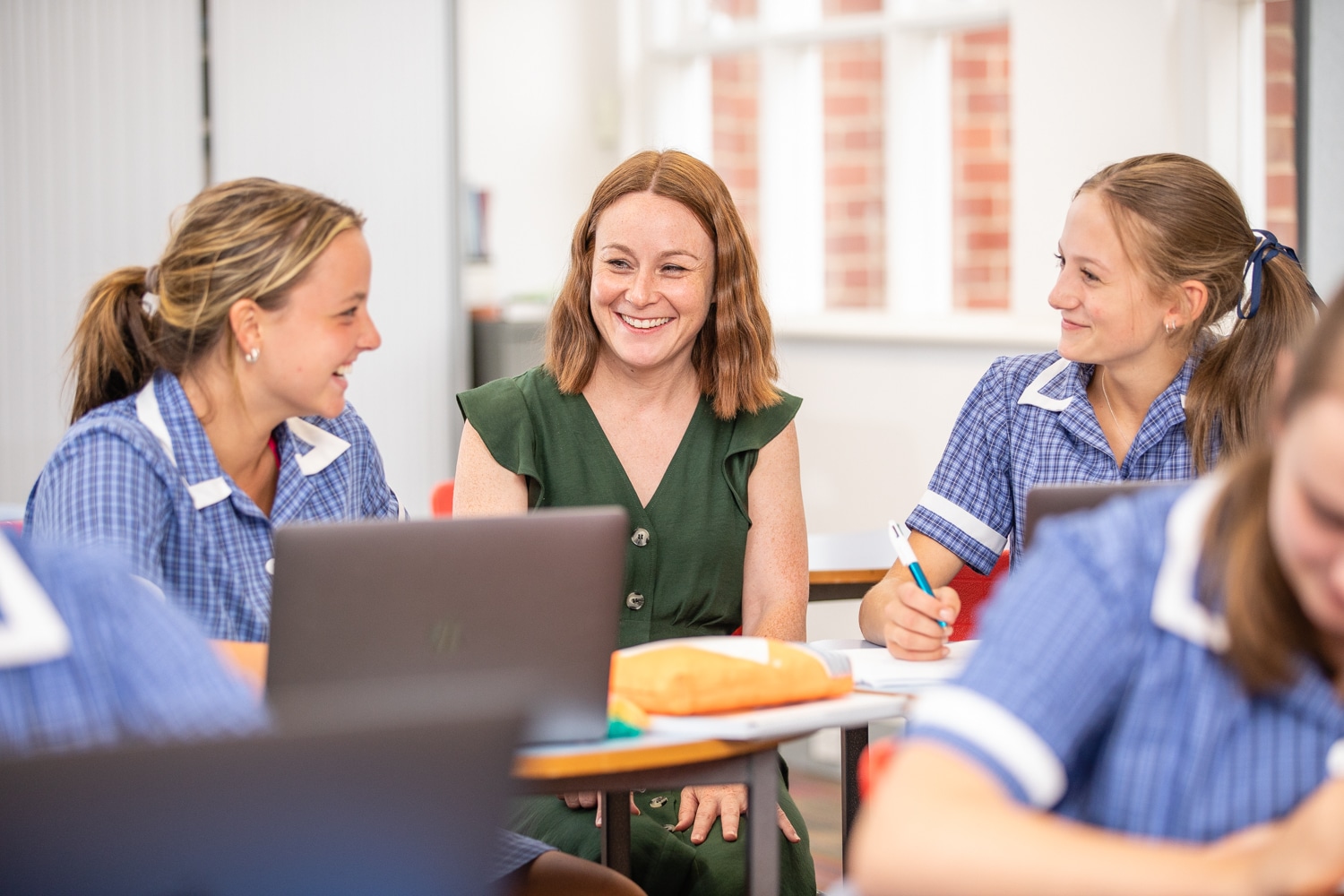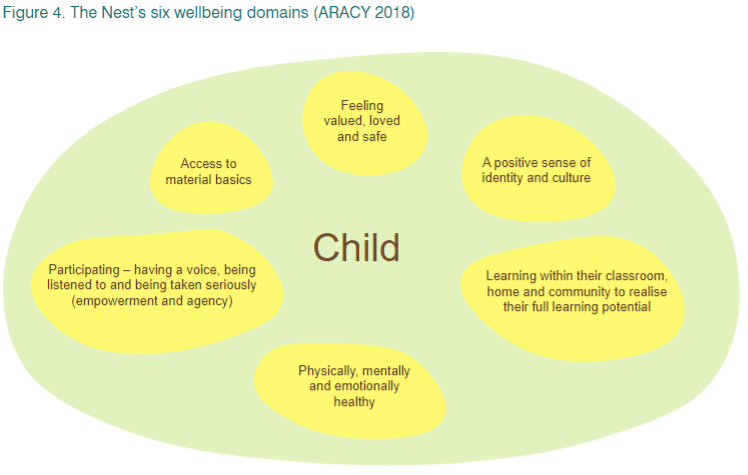The importance of wellbeing
As educators we understand that the wellbeing of our children and young people is a shared responsibility of students, educators, families and the broader community. Wellbeing is complex in that individuals are managing both internal and external factors which impact the way in which they respond to their environment and situations which arise.
The International Baccalaureate Organisation defines wellbeing as the state of feeling good and functioning well in your life. Wellbeing comprises four important elements that are all connected and influence each other: feeling good; functioning well; accomplishing; and flourishing.
“We believe that parents and teachers working together can have a positive impact on the wellbeing of our girls during these important years.”
The concept of flourishing has been a focus for Dr Martin Seligman from the University of Pennsylvania. He developed the PERMA theory of wellbeing to respond to the question of what human flourishing looks like and what enables it. He posits that there are five building blocks that enable flourishing- Positive Emotion, Engagement, Relationships, Meaning and Accomplishment.
Dr Seligman writes that Positive Emotion can be increased by cultivating gratitude, being mindful and building a sense of hope for the future. Engagement is an experience in which an individual will fully use their skills, strengths and attention for a challenging task. Relationships are fundamental to wellbeing, along with connectedness which gives life purpose and meaning. A sense of meaning and purpose can be developed from belonging to and serving others. Accomplishment is the pursuit of achievement, competence or mastery for its own sake rather than an extrinsic reward.

Learning social and emotional skills
Our social and emotional learning as we grow and develop will have a direct impact on our wellbeing. Social wellbeing gives attention to how the individual characteristics of the child facilitate positive interactions with the family, school and community, while emotional wellbeing refers to the way a person thinks and feels about themselves, including being able to adapt and deal with the challenges that we face each day.
The Nest which is a wellbeing framework for children and young people which has been released by the Australian Research Alliance for Children and Youth, and outlines six wellbeing domains: the extent to which someone feels loved and safe; has access to material basics; is healthy; is learning; is participating; and has a positive sense of culture and identity. The PERMA model of Dr Selegman is reflective in The Nest with importance being place on belonging, engagement, relationships and meaning.
Underpinning the domains of The Nest wellbeing framework is having a sense of connectedness and belonging. When a child or young person feels accepted, respected and included, they will be more likely to develop effective interpersonal skills such as collaborating, conflict resolution and communication. When a child or young person feels connected, there is also a positive association with health and academic outcomes.

Managing the transition from primary school to senior school
At Lauriston we are continually evaluating the changes that arise in our Years 3 to 7 cohorts and we make changes to our transition activities to better suit the needs of our girls.
Recently at Lauriston we held a Step into Senior School presentation for students and their parents, and we were heartened by the number of families who attended and their engagement with the presentation. Our aim for the evening was to welcome our students and their parents to the Year 7 Lilian Bayley Centre, provide an overview of how secondary school is different from the primary years and to respond to questions from our audience.
While I did not realise at the time of the presentation, Professor George Patton from the Murdoch Children’s Health Institute and his team have, since 2012 been undertaking the Childhood to Adolescence Transition Study (CATS) with 1200 young people from Years 3 to 7 and gathering data about this important transition from primary to secondary school.
Professor Patton wanted to undertake the CATS because he believes that these middle years are an important time when students are becoming active players in their social environment and engaging more with the world around them. Within the transition from primary to secondary years of school, peer relationships become important and there is a considerable level of change for our young people as new and old friendship groups align and the number of teachers our students come into contact with each day increases. The curriculum shifts, with greater levels of responsibility being placed on the young person regarding learning. This is also an important time when young people are considering their personal identity and their values.
Dr Patton is immersed in the CATS research because he believes that we do not have adequate research data for children and young people between years 3 to 7 and I would agree that these transition years have a significant impact on how young people will manage their secondary years from an academic, social and emotional perspective.
“The secret of change is to focus all of your energy, not on fighting the old, but on building the new.”
― Socrates
The role of educators in supporting wellbeing
Professor Patton believes that teachers are very good at rating how well students will manage the transition to the secondary years of school and are well placed to nurture the social and emotional wellbeing of the students. He suggests that teachers who can identify little emotional problems as they emerge can help students early before these problems become persistent and are more challenging to respond to. Professor Patton and his team have studied NAPLAN scores in Numeracy and Reading from Years 3 to 7 for the young people participating in the study and found that those with persisting emotional problems will lose one year of learning in Numeracy and about six months learning in Reading. Identification of emotional problems when these are small can have a positive impact on student wellbeing and academic achievement.
At Lauriston, the purpose of the Step into Secondary presentation, along with the transition activities we undertake in Terms 3 and 4 is to welcome students and their parents and help them develop familiarity with the structure of the school day, the teachers and their peers. We want to engage with the girls and foster enthusiasm for all that secondary school has to offer, while demonstrating that they will develop a sense of belonging in an environment where teachers know them and care about them. Our Year 7 Coordinator, Ms Gilchrist, spoke about her role and the roles of the House Tutors in being the ‘first point of contact’ for the students and their parents. These adults share the same environment with the girls each day and are best placed to identify problems and what is going well.
Relationships between the primary teacher, student and parents are different from those relationships formed in secondary school. We encourage parents to continue to involve themselves in the school lives of their daughters and want to work with parents as they navigate the academic, social and emotional matters that will arise. We believe there is importance in establishing relationships between parents and teachers so that the small emotional problems that may emerge for individual students can be identified and managed early.
We advocate parents getting to know the Year Level Coordinator and House Tutor for their daughter, communicating regularly through email and telephone conversations. Subject teachers are also available for communications about academic progress at any time of the Term. SchoolBox is the central communication hub and we rely on parents to read the information provided and also to regularly check the academic progress of their daughter through online reporting. We welcome parents attending School activities which include music concerts, House events, such as Athletics, Swimming and Cross Country, and school-based information events.
Navigating transitions
There is a tension between allowing your daughter to lean into being more independent while continuing to provide guidance and stepping in when you recognise that a problem is one you own, rather than one owned by your daughter. Attendance at school activities and getting to know your daughters’ teachers, friends and their parents will support all parents in the important role they play through the middle years of primary and secondary school.
Our presentation prompted many questions about transitioning to secondary school and some themes emerged about the opportunities for engagement, building relationships with peers and teachers and accomplishment in terms of learning and achievement in co-curricular activities.
With the Year 7 camp scheduled for the third week of Term 1, our students and teachers have a wonderful opportunity to make connections with each other and also to participate in activities which both engage and challenge the students. We encourage the girls to ‘be comfortable with being uncomfortable’ enabling them to try new activities, spend time with girls they may not yet know well, take responsibility for tasks and continue to build their levels of resilience. As our students transition into the secondary years of their education, they will continue to build their levels of resilience and to learn that there will be challenges to overcome which are manageable through open communication with teachers, parents and peers.
Susan Just, Principal
SHARE THIS ON

